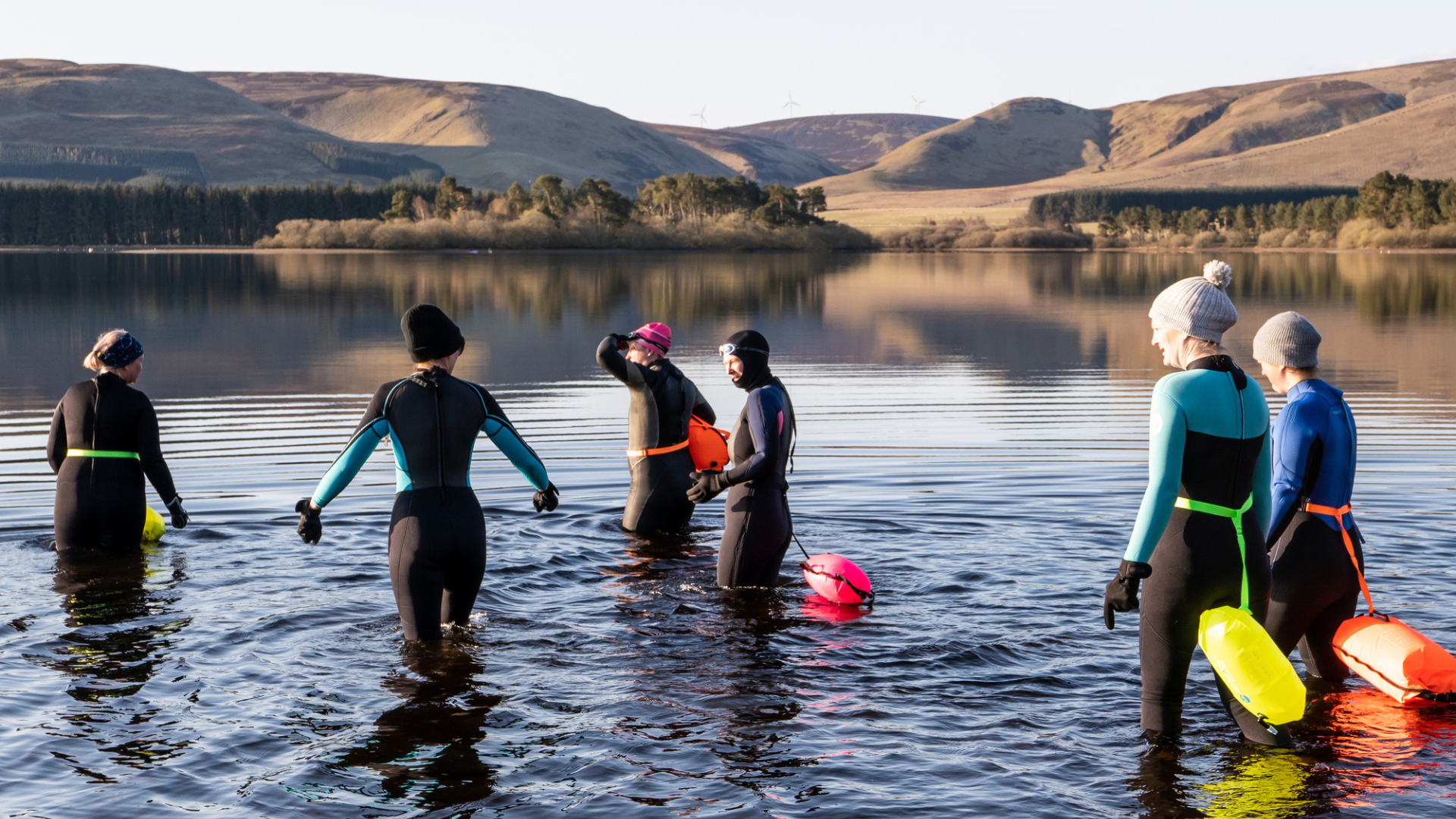[READY TO CHECK] Wales’ 5 tallest mountains: soaring Snowdonian giants
We reveal the highest mountains in Wales: storied peaks that rise high above a landscape rich in history and legend
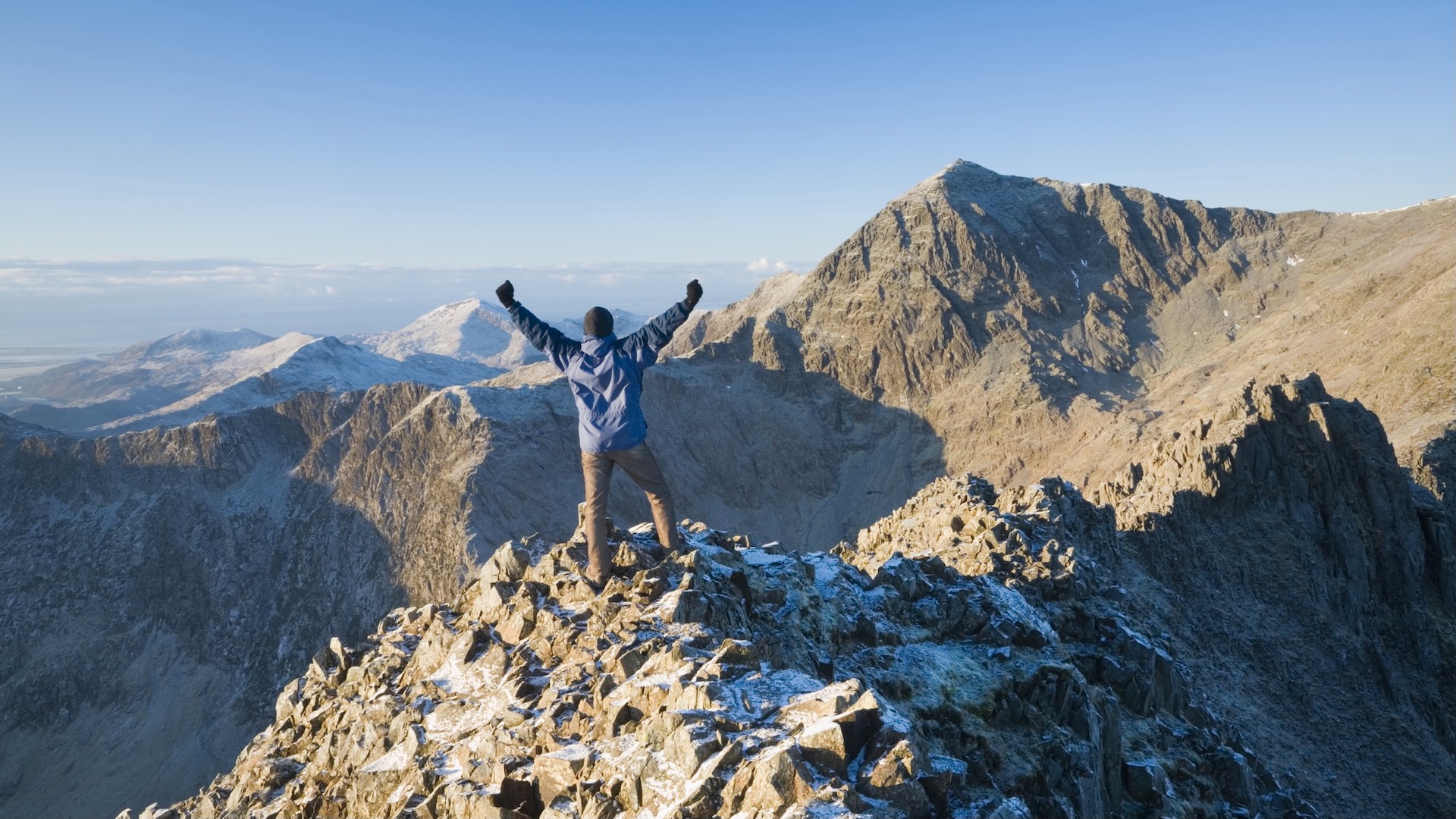
Wales’ tallest mountains are spectacular and unique places. Clustered in the country’s mountainous northwest corner, these glorious peaks are saturated in legend and hold secrets that only a prolonged apprenticeship reveals. The rewards for getting to know these storied mountains are many and varied – and in doing so you’ll be following in the footsteps of some of mountaineering’s greatest characters.
The national park in which the highest mountains in Wales are found has two names. In Welsh, it’s Eryi (pronounced eh-ruh-ree), the exact meaning of which is unclear. Some believe it to point to a ‘land of the eagles’; others believe it derives from the Latin oriri, meaning ‘to rise’. Either way, the result is evocative, befitting a landscape that has enthralled generations. The national park’s more widely used name, Snowdonia, pays tribute to Wales’ highest mountain and, for many, the main draw to the region: the mighty Snowdon.
We asked one of our mountain experts to reveal more about Wales’ tallest mountains, taking a deep dive into the top 5 and taking a look at the famous mountain challenges they form a part of.
Wales’ 5 highest mountains
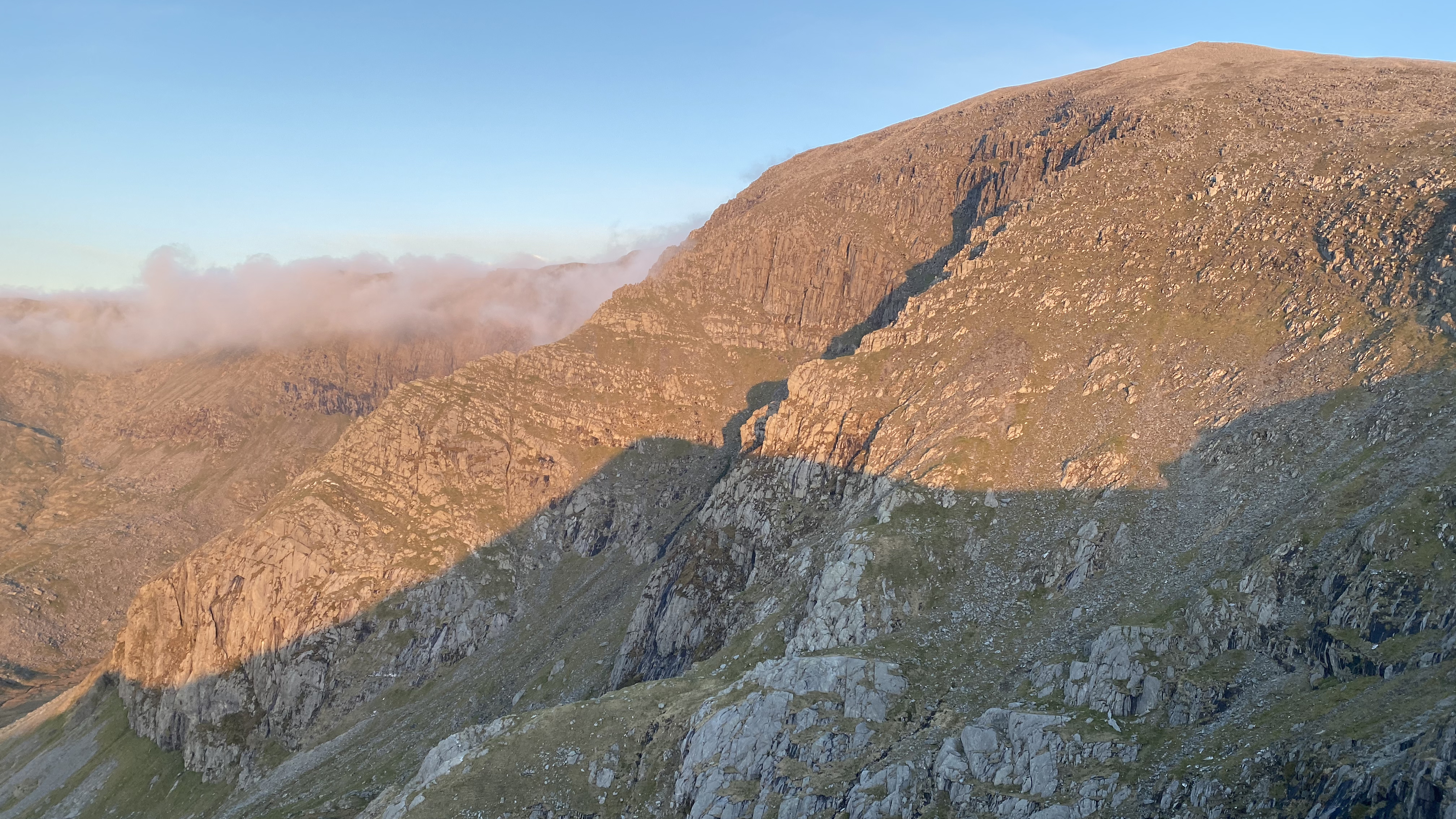
1) Snowdon (Yr Wyddfa): Famous and perennially popular peak that’s the highest land in England and Wales combined.
2) Garnedd Ugain: Snowdon’s neighbouring peak, the apex of a long ridge that includes the notorious Crib Goch.
3) Carnedd Llewelyn: Mighty crown of the broad, high and less frequented Carneddau range.
4) Carnedd Dafydd: Llewelyn's smaller sibling, Dafydd’s north face has plenty to interest adventurous souls.
Advnture Newsletter
All the latest inspiration, tips and guides to help you plan your next Advnture!
5) Glyder Fawr: Highest point in the magnificent Glyderau range and a peak that stands proud above historic Cwm Idwal.
Meet the expert

Qualified Mountain Leader and avid hiker, Alex has been exploring the mountains of Snowdonia for over a decade. He benefits from his mountaineering club having a charming hut at the foot of Snowdon, providing access to all manner of great adventures in Wales’ highest mountains.
Snowdon
Height: 1,085 meters
Location: Snowdon massif, Snowdonia National Park
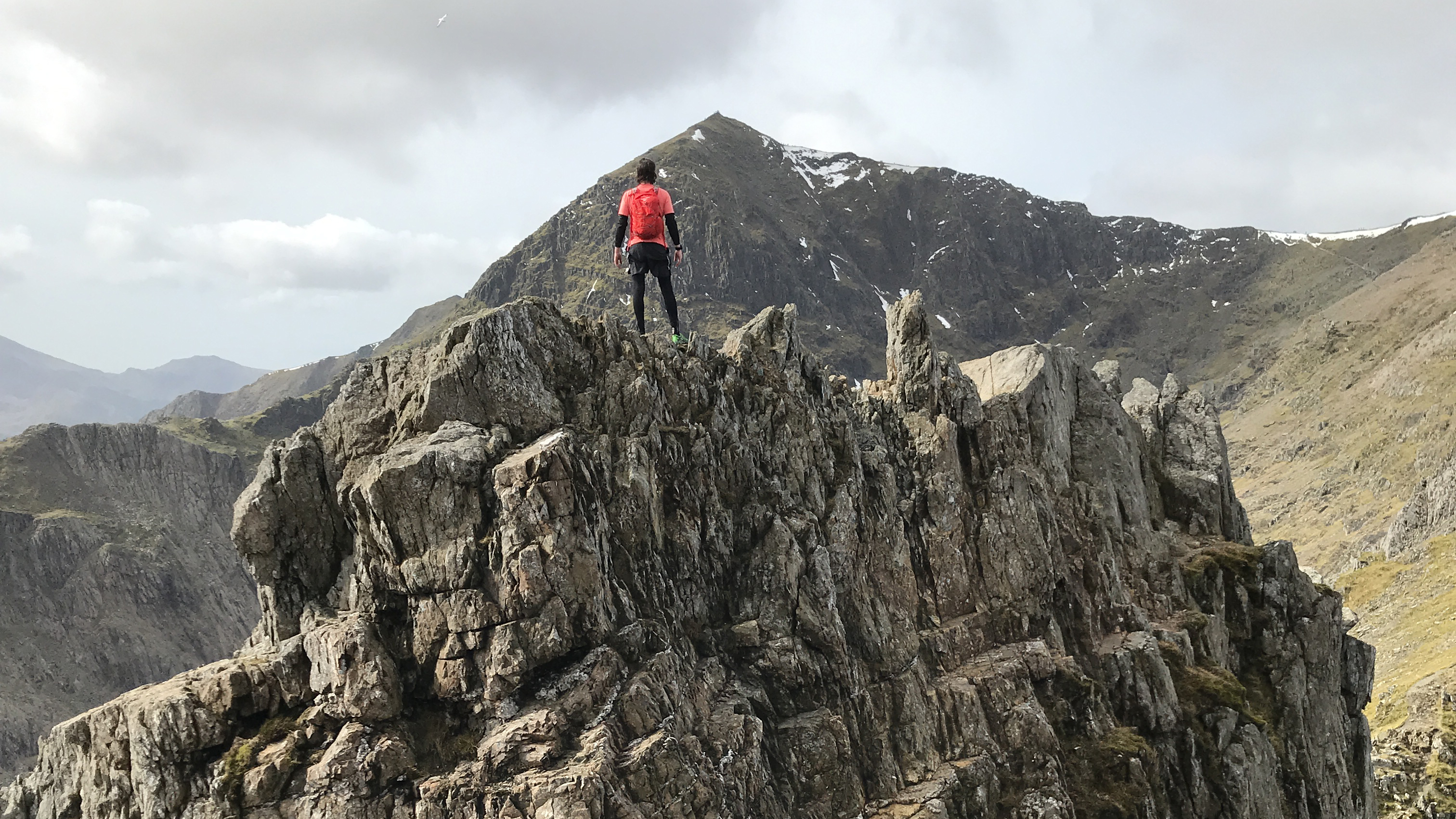
The summit of Snowdon, or Yr Wyddfa to give it its Welsh title, is the highest ground in Wales and England combined. Yr Wyddfa roughly translates to ‘the tomb’. The mountain is said to be the burial ground for Rhita Gawr, a mighty giant slain by King Arthur. The anglicised translation is somewhat less interesting, though its meaning is understandable: snowy hill.
This 1,085-meter apex is the central hub of a complex and historic mountain massif and possibly one of the most popular summits in the world. It’s thought that over 600,000 plucky souls make the climb up every year, making it Britain’s busiest mountain. And that’s not counting those who take the train…
The train? Yes, Snowdon’s summit is the high terminus for the Snowdon Mountain Railway. Constructed between 1894 and 1896, the railway has been chugging visitors up to the top for over 120 years. It runs from the village of Llanberis at the foot of the mountain to the very apex, a journey of just less than 5 miles. There’s also a visitor centre and café up there too which, along with the train, makes the top of Snowdon quite a unique place.
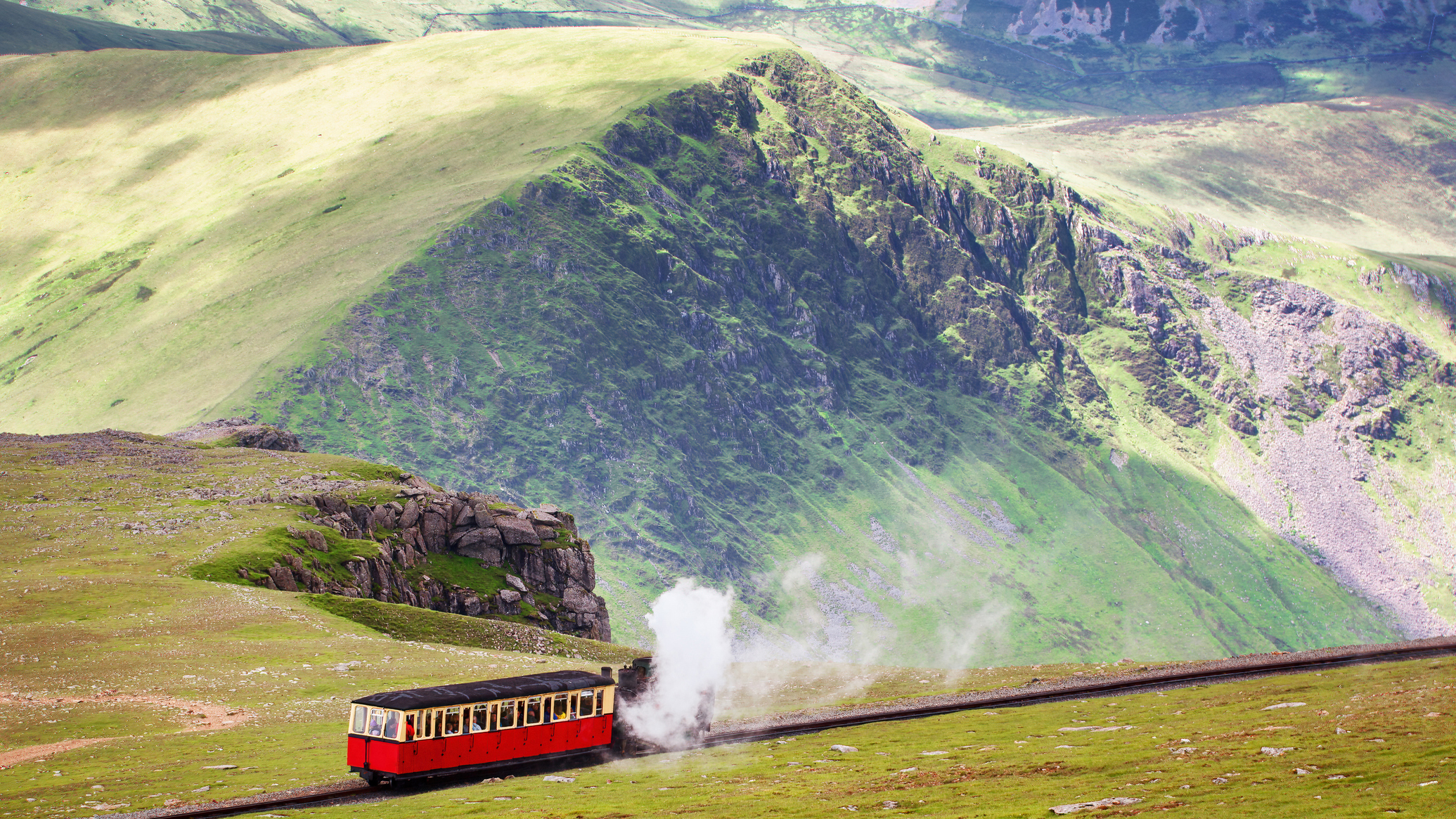
Don’t let these human intrusions fool you, while parts of the mountain have been tamed, the Snowdon massif is vast and spectacular. There are many places to seek thrills – like the knife-edged scrambler’s arête of Crib Goch or the world-class trad climbing found on the cliffs of Clogwyn Du’r Arddu. Relative serenity can also be sought if you know where to look.
Nevertheless, Snowdon undoubtedly strains under the pressure of being everything to everyone. The peak baggers looking to snare Wales’ highest mountain, the daring Instagrammers desperate to add a Crib Goch traverse to their content, the grandparents and infants riding up on the chuffer train and the climbers wanting to pit themselves against the mountain’s great test pieces – all flock to Snowdon. Yet it’s a mountain carries this weight with grace. And isn’t a mountain that’s something to everyone a wonderful thing?
Garnedd Ugain
Height: 1,065 meters
Location: Snowdon massif, Snowdonia National Park
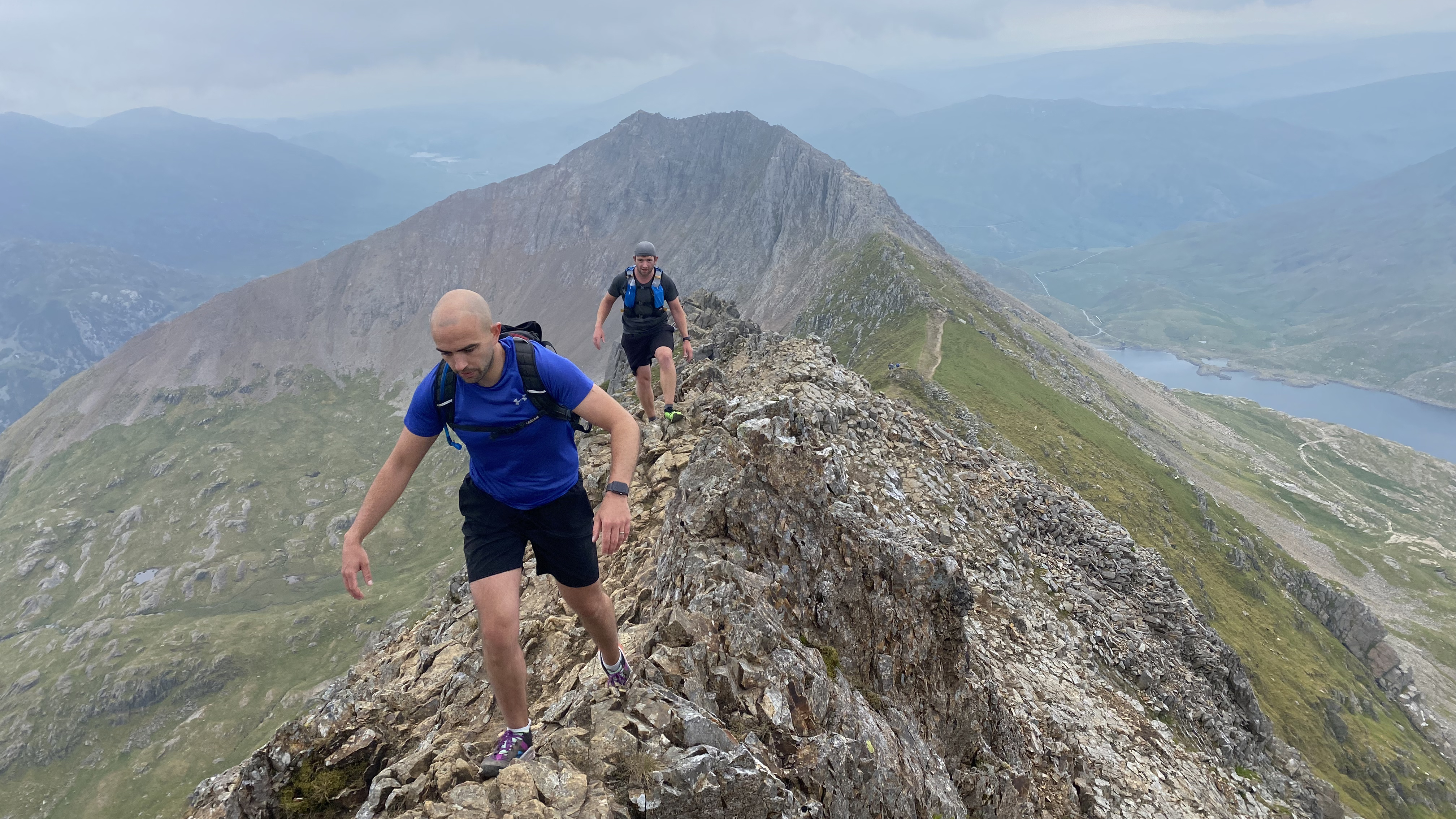
The Snowdon massif’s 2nd highest summit and also the 2nd tallest mountain peak in Wales, Garnedd Ugain stands proud at 1,065 meters. In truth, it’s not far removed from Snowdon’s summit – getting between the two is nothing more than a straightforward walk. So, to think of it as a separate mountain would be pushing it. However, it’s a peak with plenty going for it, and not just the view towards Snowdon's squat rocky pyramid.
It’s the high point of perhaps the most thrilling ridge in Wales, one that begins with the deliciously narrow knife-edge of Crib Goch and continues with the equally entertaining but slightly less serious Crib y Ddygsl. Both are grade one scrambles, very much achievable by confident hikers, though Crib Goch is famous for its exposure and a head for heights is definitely required.
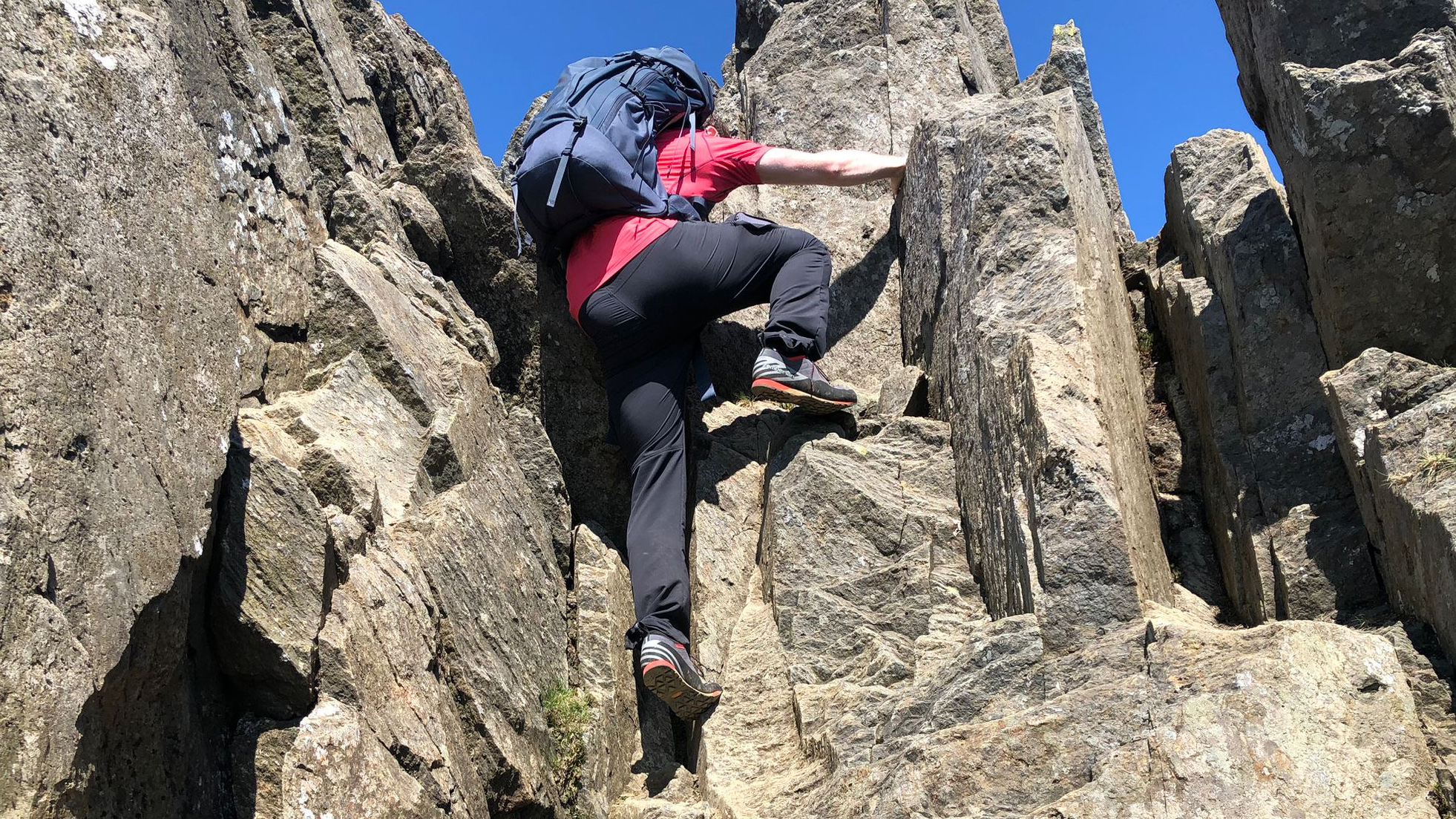
Garnedd Ugain’s summit stands high above the head of Cwm Glas, one of the Snowdon massif's quiet and spectacular northern cwms. Cwm is the Welsh word for a glacial scoop, or cirque. It’s used throughout Wales’ high places and further afield too (such as the Western Cwm on Everest). The western arm of Cwm Glas is broad in its upper reachers and is the line taken by the Snowdon Mountain Railway. In contrast, the eastern arm is an intimidating rocky spur: the Clogwyn y Person Arête. The grade three scramble that tackles this towering feature is a classic mountaineering line and one of the most serious in the national park.
In fact, there’s plenty of mountaineering history on the Snowdon massif. This is exemplified by the fact it was a regular haunt of George Mallory, one of Britain’s greatest ever mountaineers, and that it was a principal training ground for the team that completed the first ascent of Everest in 1953, including Edmund Hillary and Tenzing Norgay.
Artefacts from the famous first ascent can still be viewed at the nearby establishment where the team stayed during their training forays in the early 50s. A few miles to the west of Garnedd Ugain, at the entrance to the Llanberis Pass, you’ll find the leafy Pen-y-Gwryd Hotel, a place to marvel at the endeavors of the first people to reach the roof of the world.
Carnedd Llewelyn
Height: 1,064 meters
Location: Carneddau Range, Snowdonia National Park
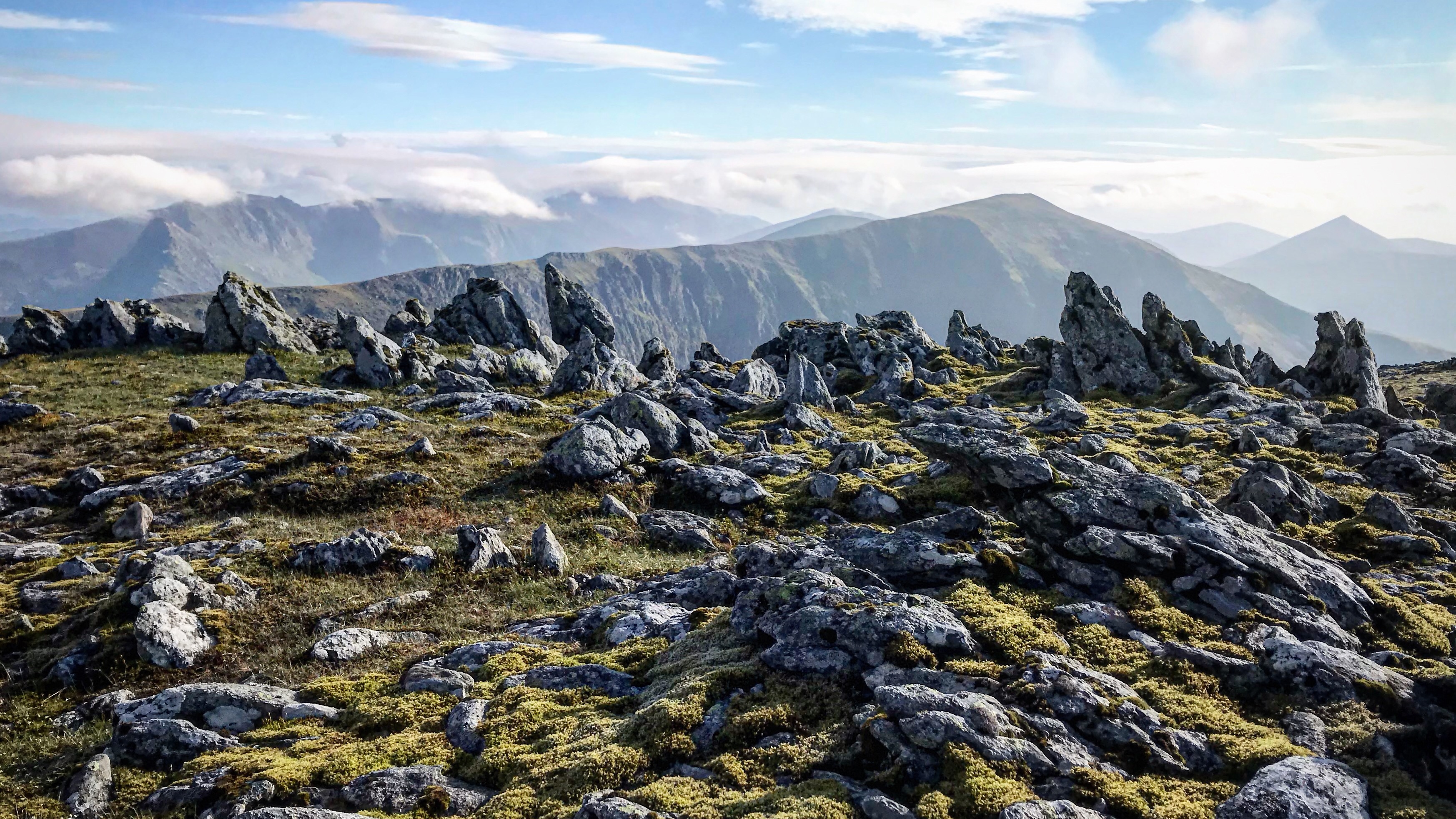
When it comes to mountainous terrain, Snowdonia’s final northern flourish is Wales’ largest area of consistently high ground. The rounded, rolling and beautiful Carneddau Range sprawls from the Ogwen Valley to the Irish Sea at Conwy. In terms of character, this vast and lofty mountain family is less edgy than their counterparts to the south. However, what they lack in narrow ridgelines and spiky rock, they make up for with a certain tranquillity, a sense of wilderness and, often, challenging weather. The range is frequently likened to Scotland’s Cairngorms, the sub-Arctic mountain region where the majority of Britain’s highest ground is found.
The loftiest point in the Carneddau, and Wales’ 3rd tallest mountain peak, is Carnedd Llewelyn. Given Garnedd Ugain’s proximity to Snowdon’s summit, it’s often not considered a separate mountain. Thus, Llewelyn is sometimes cited as Wales’ 2nd highest mountain, despite being its 3rd highest peak. The summit stands at 1,064 metres and is the central point of four distinct ridges.
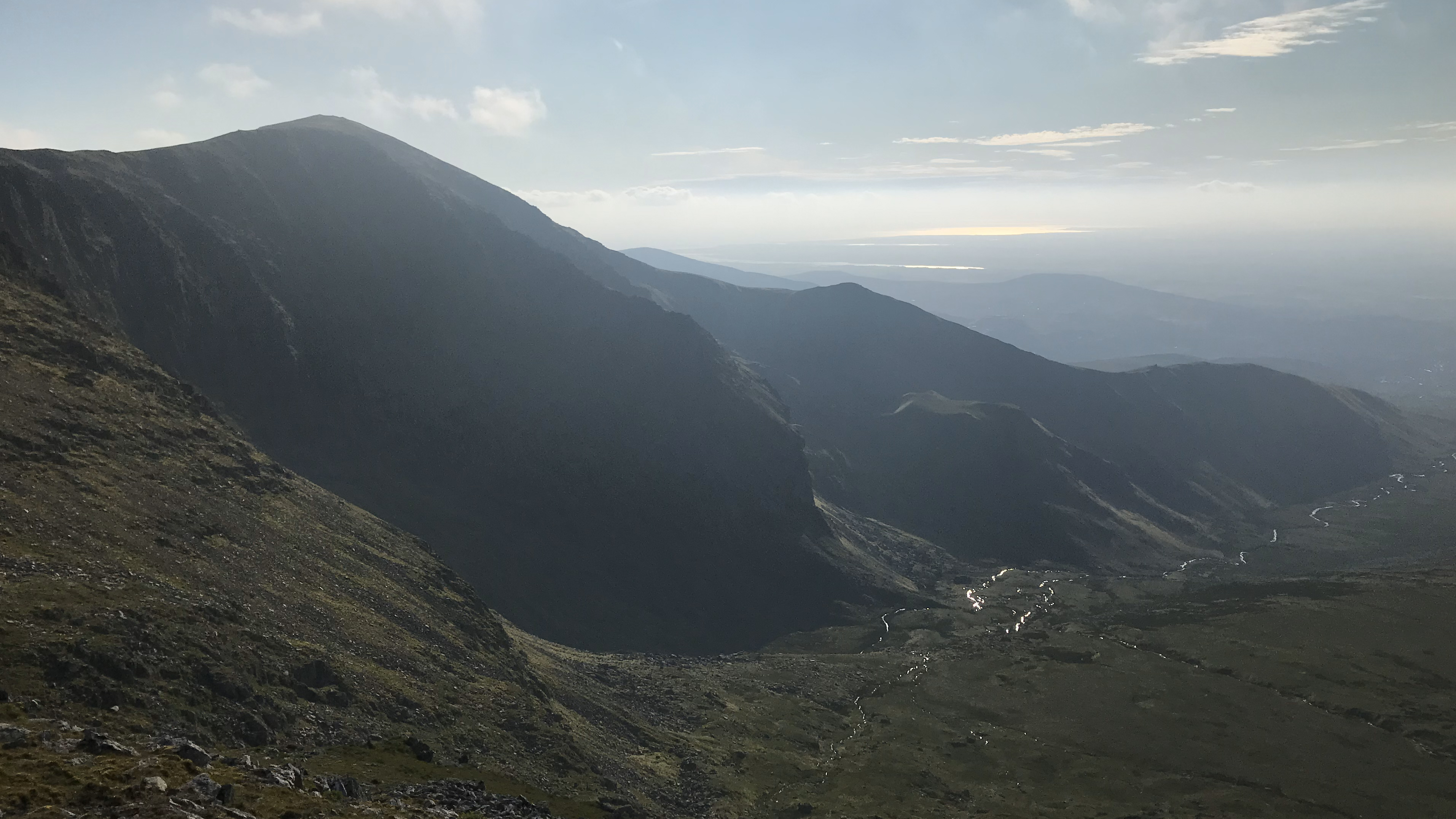
Head along the ridge to the south and you’ll arrive at Carnedd Dafydd, the next summit on our list. To the west rises the shapely peak of Yr Elen, while the ridge to the north leads to the broader, grassier summits that eventually tumble down to the Irish Sea. The southeast ridge is undoubtedly Llewellyn’s finest. It’s home to the grand cliffs of Craig Yr Ysfa and the attractive trail to neighboring Pen yr Helgi Du, ‘the peak of the black hound’. Continue in this direction and you’ll arrive at surely one of Britain’s best named peaks: Pen Llithrig y Wrach – ‘the peak of the slippery witch’.
Carnedd Dafydd
Height: 1,044 meters
Location: Carneddau Range, Snowdonia National Park
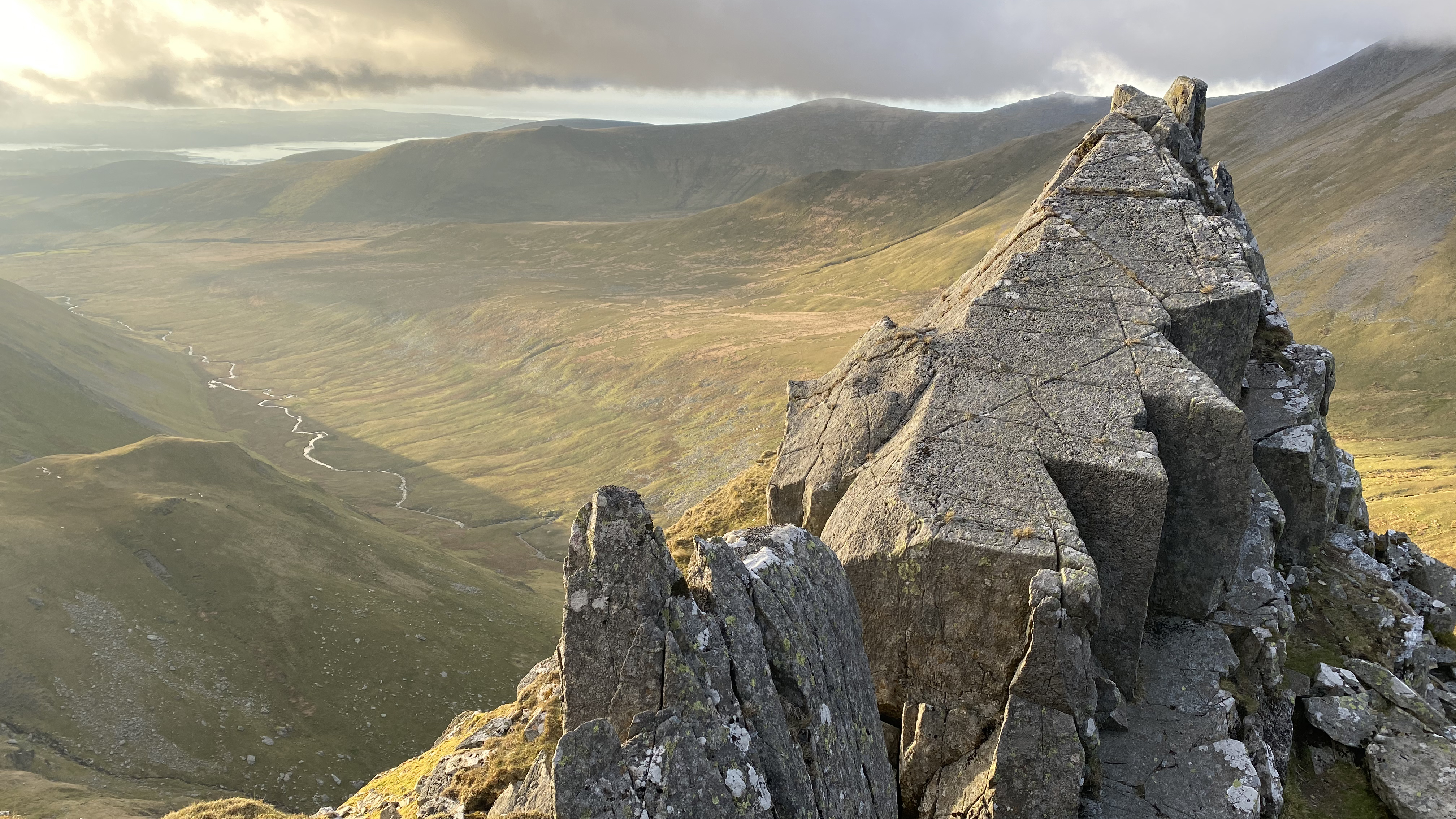
To the southwest of Carnedd Llewellyn stands Carnedd Dafydd, Wales’ 4th highest summit. Broad and rolling to the south and east, Dafydd’s finest features are undoubtedly the crags and principal spur of its rocky north face. The dark cliffs to the east of the summit are the Ysgolion Duon, which sounds like something from Lord of the Rings. In fact, Tolkien was very much inspired by the Welsh language when creating his Elvish tongues. Delightfully, Ysgolion Duon translates to ‘the Black Ladders’ and it’s a renowned trad climbing crag.
Back to the west and beneath Carnedd Dafydd’s summit rises the ridge of Crib Lem, also known as the Llech Ddu Spur. This is a wonderfully wild feeling grade one scramble, undoubtedly the finest of its grade in the Carneddau and a truly adventurous hiking route onto the mountain.
Glyder Fawr
Height: 1,001 meters
Location: Glyderau Range, Snowdonia National Park
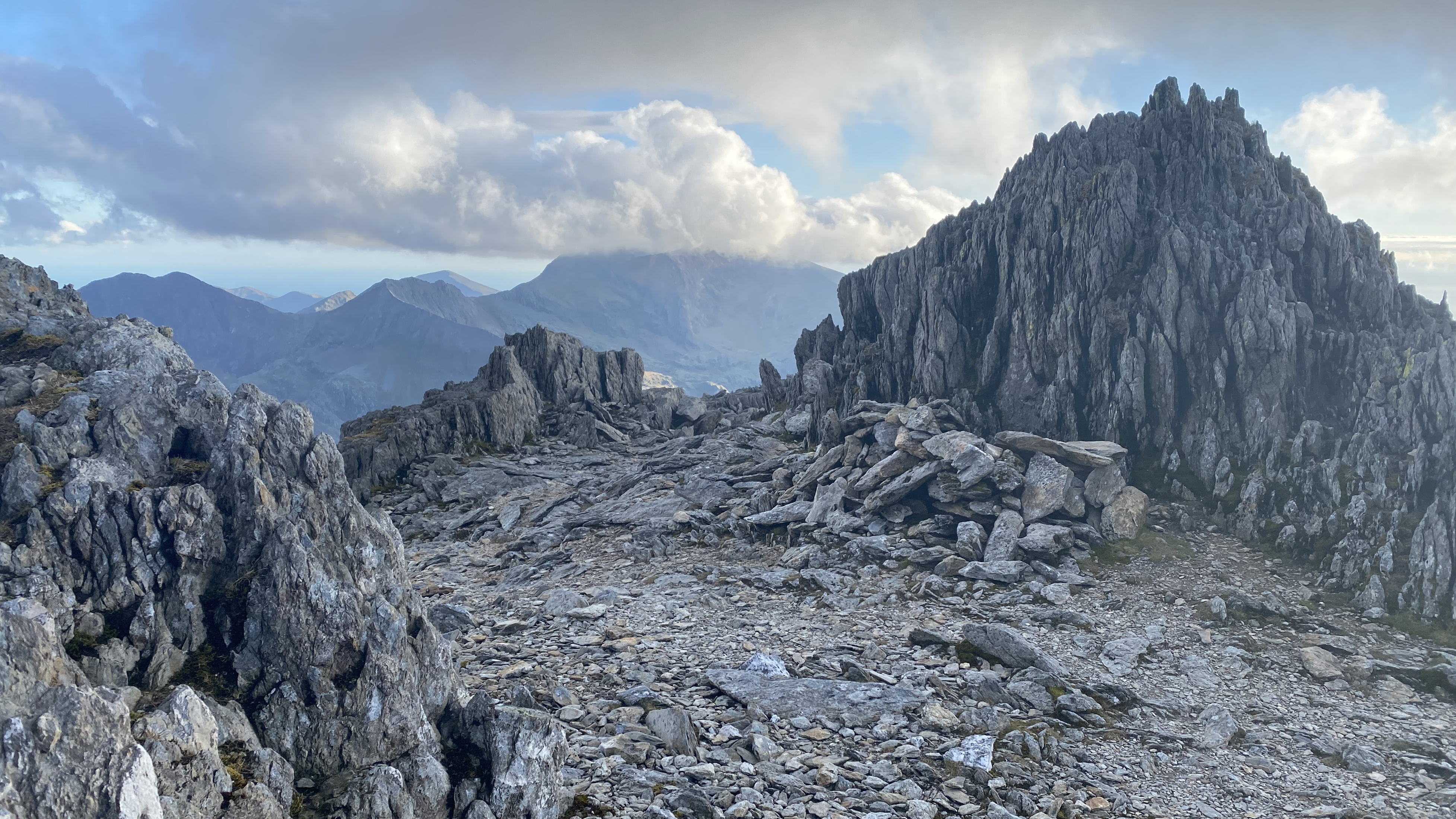
The Glyderau are arguably the finest group of mountains in the UK south of Scotland. Pronounced Glidd-uh-rye, this Welsh name translates to ‘heap of stones’. Once you find yourself on the jumbled summits of either Glyder Fawr, Glyder Fach or the sensational Tryfan, you’ll appreciate exactly why they were named thus. These are peaks characterized by boulder fields and bizarre and often iconic rock formations.
Wales’ 5th tallest mountain peak, Glyder Fawr (Fawr meaning big to Fach’s small) is the highest in the range, reaching a noble height of 1,001 meters. It features a broad, moonscape summit plateau, peppered with angular rock towers. When visibility is low, it can be an unnerving setting, the bristling shards of rock emerging from the gloaming like ancient torture implements. However, on a fine day, the views across towards the Snowdon massif are mightily impressive. The graceful sweep of Crib Goch’s North Ridge looks particularly enticing.
As is so often the case, the mountain’s northern aspect is its most interesting, a great complex of ridges, dark cliffs and deep cwms. Beneath its northern flanks nestles Cwm Idwal, an internationally important and historic spot for geologists and a site that the great Charles Darwin was particularly enamored with.
Welsh 3000s
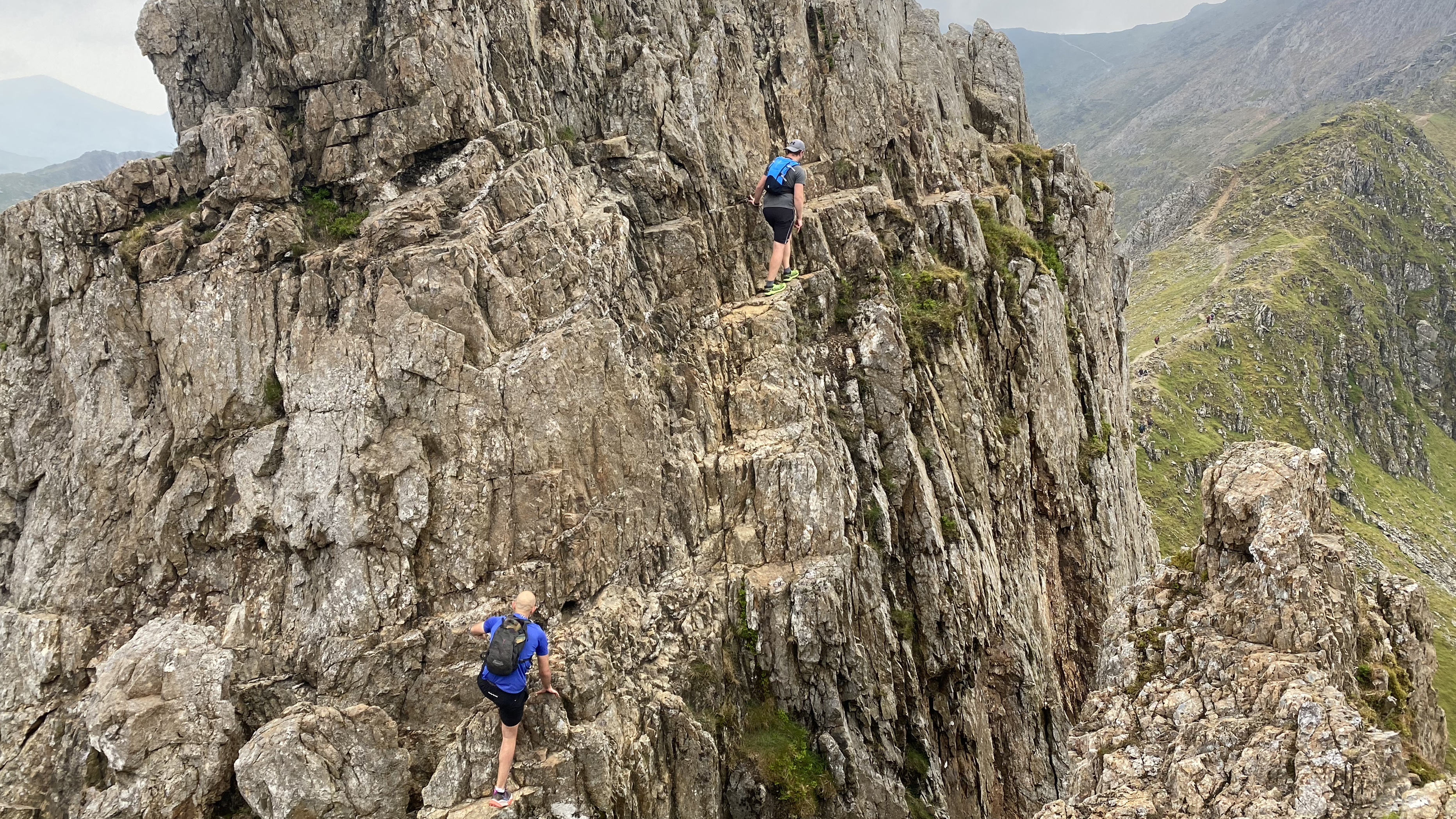
As mentioned, all of Wales’ peaks that reach over 3,000 feet above sea level are clustered in the northwest corner of Snowdonia National Park, which itself is found in the northwest corner of the country. The relative proximity of these 15 peaks has given rise to a popular challenge: the Welsh 3000s.
The challenge is beautiful in its simplicity, simply hike or run between the summits in one continuous journey. Most tackle it as a linear traverse that snakes along the ridge lines of Yr Wyddfa, the Glyderau and the Carneddau for around 25 miles. There’s plenty of up and down, approximately 3,000 meters of the stuff. Just spare a thought for the runners who take on the six-day Dragon’s Back Race, one of the world’s most legendary trail races – they take on the majority of the Welsh 3000s on day one alone.
What about Pen y Fan and Cadair Idris?
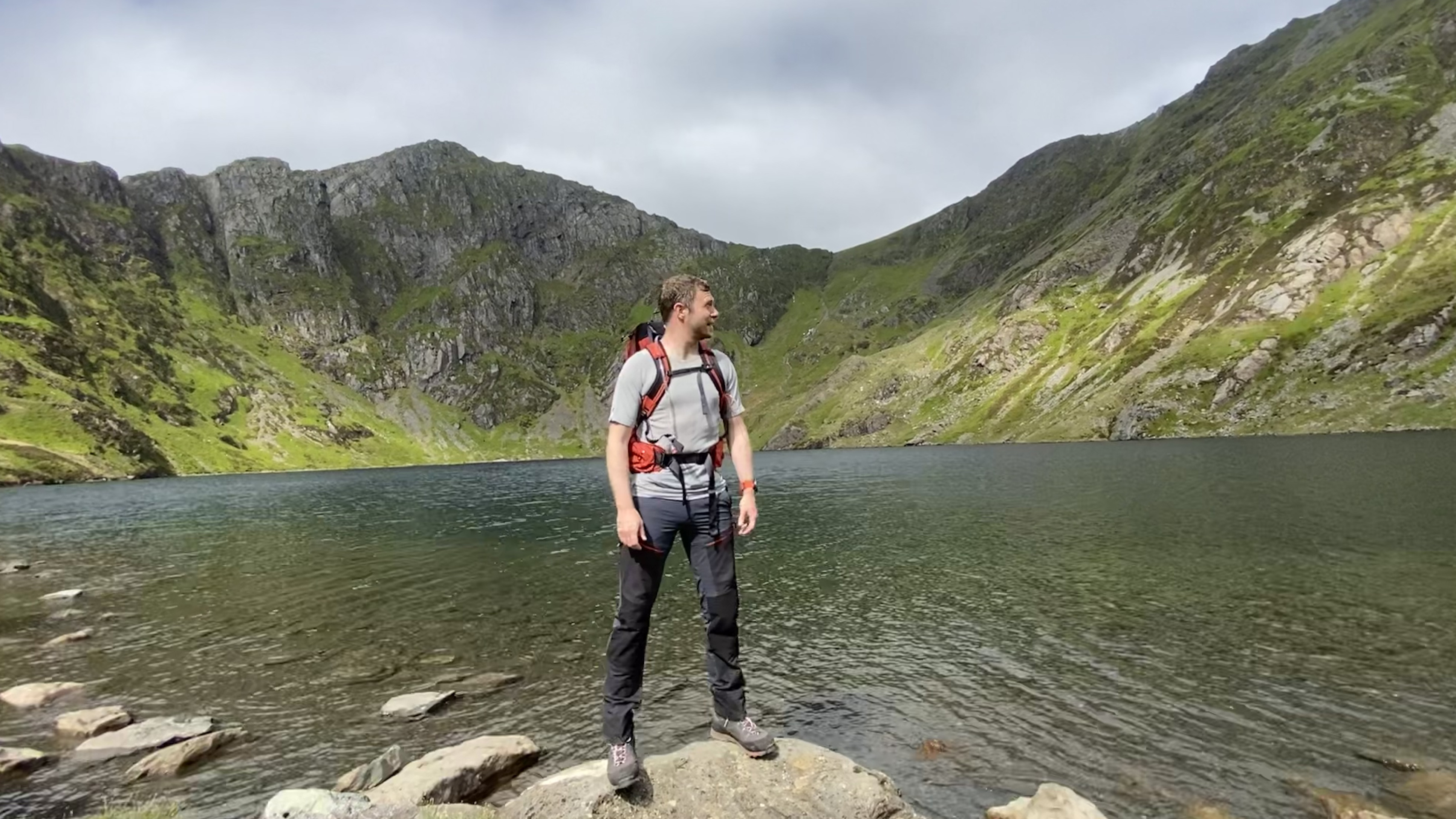
Wales has its own equivalent of the UK’s National 3 Peaks Challenge. The UK version climbs Snowdon, the tallest mountain in Wales; Scafell Pike, the tallest mountain in England; and Ben Nevis, you guessed it – the tallest mountain in Scotland. It should be noted that these are not the three highest mountains in the UK – all of these belong to the Scottish Highlands.
Similarly, the Welsh 3 Peaks Challenge doesn’t climb the 3 highest mountains in the country. Instead, it climbs Snowdon, along with the highest peak in South Wales, Pen y Fan, and Cadair Idris, an iconic mountain in the south of Snowdonia. Unlike Snowdon and Pen y Fan, Cadair Idris isn’t even the highest peak in its surrounding region – that accolade goes to the silent giant of Aran Fawddwy. However, it’s generally accepted that Cadair Idris is the finest mountain in the southern region of the national park. So, when you climb the Welsh 3 Peaks, you’re actually climbing the nation's highest (Snowdon), the 19th highest (Cadair Idris) and the 20th highest (Pen y Fan).
Alex is a freelance adventure writer and mountain leader with an insatiable passion for the mountains. A Cumbrian born and bred, his native English Lake District has a special place in his heart, though he is at least equally happy in North Wales, the Scottish Highlands or the European Alps. Through his hiking, mountaineering, climbing and trail running adventures, Alex aims to inspire others to get outdoors. He's the former President of the London Mountaineering Club, is training to become a winter mountain leader, looking to finally finish bagging all the Wainwright fells of the Lake District and is always keen to head to the 4,000-meter peaks of the Alps. www.alexfoxfield.com

